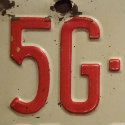
A German, a Frenchman and an American walk into a 5G shop and order a round of network equipment. But as the American is loading up on antennas, the German and the Frenchman decide not to overdo it, worried as they are about the frosty environment back home.
You've heard this one before, right? The notion that US operators are eager to splash the cash on network equipment, while an investor-unfriendly climate forces their European counterparts to be more cautious, has rapidly gained traction as 5G swings into view. But the reality is more nuanced. Figures published today and in recent weeks show US telco spending will not take off this year, despite all the fuss about a US 5G lead. And while Europe's giants do not plan to increase spending this year, they have consistently invested a higher percentage of their sales in capital expenditure.
First, the Americans: Guidance already published by AT&T, Verizon and T-Mobile US -- the country's "big three" mobile operators -- indicates capex across those organizations will rise to between $45.8 billion and $47.1 billion this year, from $43.5 billion in 2018. However, annual spending in 2016 and 2017 was not much below the bottom end of this guidance, at more than $44 billion, and an increase of less than $2 billion seems unlikely to deliver the 5G promised land. Despite the US marketing antics of recent months, a spokesperson for Swedish equipment vendor Ericsson this week said Verizon is currently the only company in the world to have launched an actual 5G service. And even that is based on pre-standard specifications, Ericsson concedes.
2013 | 2014 | 2015 | 2016 | 2017 | 2018 | |
AT&T capex | 21.2 | 21.4 | 20.0 | 22.4 | 21.6 | 21.3 |
AT&T revenues | 128.8 | 132.4 | 146.8 | 163.8 | 160.5 | 170.8 |
AT&T capital intensity | 16% | 16% | 14% | 14% | 13% | 12% |
Verizon capex | 16.6 | 17.2 | 17.8 | 17.1 | 17.2 | 16.7 |
Verizon revenues | 120.6 | 127.1 | 131.6 | 125.98 | 126.0 | 130.9 |
Verizon capital intensity | 14% | 14% | 14% | 14% | 14% | 13% |
T-Mobile capex | 4.0 | 4.3 | 4.7 | 4.7 | 5.2 | 5.5 |
T-Mobile revenues | 24.4 | 29.6 | 32.1 | 37.2 | 40.6 | 43.3 |
T-Mobile capital intensity | 16% | 15% | 15% | 13% | 13% | 13% |
Total capex | 41.9 | 42.9 | 42.5 | 44.2 | 44.1 | 43.5 |
Total revenues | 273.7 | 289.1 | 310.5 | 327.0 | 327.1 | 345.0 |
Total capital intensity | 15% | 15% | 14% | 14% | 13% | 13% |
Source: The companies. |
The data also reveals that AT&T, Verizon and T-Mobile spent just 13% of their 2018 revenues on capex. With Verizon and T-Mobile guiding for a sales increase this year, that "capital intensity" seems unlikely to pick up much in 2019.
Direct comparisons with Europe are tricky because the largest operators are active in other parts of the world. But Deutsche Telekom, the owner of T-Mobile and the biggest telco in Europe, plans to spend €7.9 billion ($9 billion) in capex outside North America this year. That is only slightly more than the €7.8 billion ($8.9 billion) it invested in 2018, and its guidance appears to factor in the cost of spectrum licenses, too. Yet the German incumbent's capital intensity was an impressive 20% last year. And it has steadily risen from just 14% back in 2013.
2013 | 2014 | 2015 | 2016 | 2017 | 2018 | |
DT non-US capex | 5.9 | 6.2 | 6.6 | 6.8 | 7.5 | 7.8 |
DT non-US revenues | 41.6 | 40.3 | 40.3 | 39.4 | 39.2 | 39.1 |
DT non-US capital intensity | 14% | 16% | 16% | 17% | 19% | 20% |
Orange capex | 5.6 | 5.6 | 6.5 | 7.0 | 7.2 | 7.4 |
Orange revenues | 41.0 | 39.4 | 40.2 | 40.9 | 41.1 | 41.4 |
Orange capital intensity | 14% | 14% | 16% | 17% | 17% | 18% |
Telefonica capex | 8.2 | 8.2 | 8.0 | 8.6 | 8.2 | 7.3 |
Telefonica revenues | 57.1 | 50.4 | 47.2 | 52.0 | 52.0 | 48.7 |
Telefonica capital intensity | 14% | 16% | 17% | 16% | 16% | 15% |
Total capex | 19.7 | 20.0 | 21.1 | 22.4 | 22.8 | 22.5 |
Total revenues | 139.6 | 130.1 | 127.8 | 132.3 | 132.3 | 129.2 |
Total capital intensity | 14% | 15% | 17% | 17% | 17% | 17% |
Source: Companies. |
France's Orange also looks far from miserly on this measure. While active across Africa and the Middle East, as well as throughout Europe, it foresees only a "slight decrease" in group capex this year, after forking out ��€7.4 billion ($8.4 billion) in 2018. That was equal to about 18% of revenues, and the figure is up from 14% in 2013. Excluding Deutsche Telekom's US subsidiary, the German and French incumbents together spent €15.2 billion ($17.3 billion) in 2018, up from €11.5 billion ($13.1 billion) in 2013. Their combined reported revenues over that period, meanwhile, fell from €82.6 billion ($93.8 billion) to €80.5 billion ($91.4 billion).
That leaves Spain's Telefónica, the other one of the big European incumbents to have reported financial results today. Like Orange, it has a sizeable footprint outside Europe, with operations in various Latin American markets, but is active in some of Europe's biggest economies, too. This year, it plans to invest about €7.5 billion ($8.5 billion) across the entire group, up from €7.3 billion ($8.3 billion) in 2018. But it also forecasts a 2% increase in sales, which means capital intensity will remain at 15%. That figure is down from a high point of 17% back in 2015, as Telefónica wrestles with debt reduction. Nevertheless, it is two percentage points higher than capital intensity at any of the US operators.
You're invited to attend Light Reading’s Big 5G Event! Formerly the Big Communications Event and 5G North America, Big 5G is where telecom's brightest minds deliver the critical insight needed to piece together the 5G puzzle. We'll see you May 6-8 in Denver -- communications service providers get in free!
None of this will silence the critics. In the less competitive US market, say pro-investor commentators, operators can generate more than European telcos in per-customer revenues, and therefore spend considerably more even when capital intensity is much lower. Indeed, the US big three spent nearly twice as much as Deutsche Telekom, Orange and Telefónica did last year, despite having a smaller international footprint.
Naysayers think Europe is already lagging in the race to build 5G networks. No doubt, the US and parts of Asia (but especially the US) are making a lot more noise in that race, whooping and jeering as they clock up the miles. But if 5G is about underlying network transformation, and not just a fancy new set of radios, then US operators may have less to celebrate. When it comes to virtualization and the rollout of cloud-native networks, the technology hurdles do not end at national or regional boundaries. And US regulators have shut out a certain Chinese vendor that analysts and telcos elsewhere regard as a technology leader. For all the regulatory and competitive challenges that Europe's operators face, the case they are shirking their investment responsibilities is a hard one to make.
Related posts:
— Iain Morris, International Editor, Light Reading
Read more about:
EuropeAbout the Author(s)
You May Also Like




.jpg?width=300&auto=webp&quality=80&disable=upscale)







